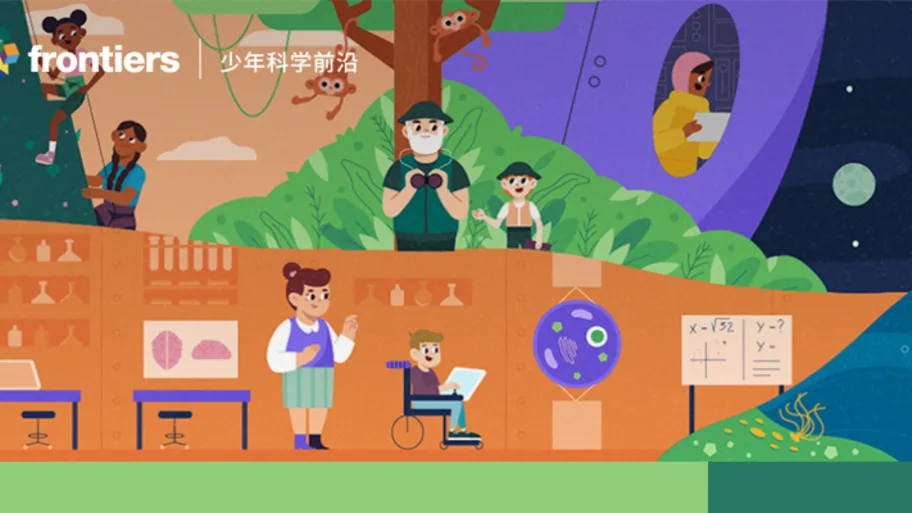
- Science news
- Open science and peer review
- Open Access, a fortune to less developed countries
Open Access, a fortune to less developed countries
Not all people have equal access to science. In places where funds are particularly scarce, open access to science could bring fortune.

Defining fortune
The development of a country is officially measured with statistical indexes such as income per capita, gross domestic product, life expectancy and literacy. S__cience literacy is more subjective and is not normally considered a basic need; it is nonetheless, of great value for development of a country.
From my tiny perspective, science literacy can enrich a population not only locally, by knowledge or application in specific fields, but also very profoundly in the form of wide-spread learning in proximity with the scientific reasoning. Exercising the scientific method builds critical thinking, favoring informed political choices, the adoption of healthier lives and sustainable interactions with the natural environment. Less developed countries tend to invest less in scientific training; often, this is due to their primary need to invest on basic education, health, and infrastructures for their population at large; sometimes it is due to a certain kind of political interest in keeping the population uninformed and conformed.
In parallel, it remains a reality that publishing quality scientific articles and data has inherent costs. These are covered by the majority of publishers with subscription or article fees, in a traditional business model that makes access to the majority of research fully restrictive to those who can afford it. This gate-keeping of scientific knowledge is directly problematic for institutions or countries with less funding, no matter how politically or socially willing they are to increase science literacy.
Open-access (OA) to knowledge in the sciences is a movement to create open-readership, open-data, open-tools and changes in the peer-review process. As such, it is like a democratic system that stimulates science literacy. At the core of the OA movement is a change in the business models for science publishing. Unlike traditional models, Gold Open-Access publishers, like Frontiers, make articles freely available online, and cover their fees with an article processing charge (APC), typically paid by an author’s grants. While this still requires investment in research through governmental or private grants, it makes the product of research available to all, without restriction. OA journals also wave APC on case by case bases – and ensure this information remains confidential, not to affect the review process – allowing less fortunate authors to publish. Other models exist, and new models and technology will certainly develop, together making money less and less of a barrier for the spread of scientific knowledge.
OA publishers are also behind technological development that makes publishing, peer-reviewing and readership cheaper, more efficient and user-friendly. For instance, the development of interactive platforms, online data and analysis sharing tools, and new digital formats of publication are being driven by OA supporters.
Thus, by distributing science, OA also enhances the value society can get from science.
Changing fortune
In most fields, the science publisher holds the responsibility to manage peer-review and set quality standards, regardless of the business model. How well journals truly ensure the quality of science is an open matter, and fear of OA is fast spread and heating up discussion forums.
The first issue that contributes to a negative image of OA publishing is the fear that proliferation of OA would set in motion changes in the publishing system that would seriously undermine the current peer review system, and hence, the quality of scientific publishing. The second common concern is on the business model where authors are charged APCs; superficially, such publishers would be inclined to accept substandard articles since their income is linearly dependent on the number of papers they publish. These notions are part of unethical practices that define Predatory Journals, and not all journals fall into this category. The Directory of Open Access journals (https://doaj.org/) created the online directory that indexes high quality, open access, peer-reviewed journals, and together with the Open Access Scholarly Publishers Association (OASPA, http://oaspa.org) and the Committee on Publication Ethics (COPE, http://publicationethics.org), current efforts are guiding the future by placing value in OA journals.
In digging deeper about publishing practices, I realized most graduate programs do not include formal education on science publishing, so that young scientists learn to refrain from unhealthy predatory practices. I would have been glad to get the basics down earlier in my doctorate training, in a class or workshop, to have sort of a float-board as I swam through my first authorship papers — for now, anyone can start at the websites I cited above. I realize now that improved publishing practices and the correction of OA misconceptions will occur through educating young scientists on the publication process. And because OA journals are the major benefactors of publishing awareness, OA publishers have been driving information sessions and collaborations with universities and research institutions.
Thus, the OA movement is driving constructive understanding of the scientific process for young scientists, and placing value on how well we scientists communicate our work, for ultimate impact!
Widening fortune
By definition, the OA movement makes discovery accessible not only to scientific training and research development, but also to policymakers, health officials, educators, journalists and the curious reader. Thus, even though OA does not alone guarantee science literacy and technology for all, OA allows their impact to be infinitely large. The changes that come with OA will most likely permeate fundamental aspects of culture and citizenship. That is why I think of us all as part of a revolution. Open science is the venue of science literacy, which can completely reshape society.
Idealistic? Yes. Unrealistic? No. I think we are simply still at the start of the OA revolution. It seems logical it could have great impact in less developed countries, but some basic desire of using science and critical thinking, to improve the human and natural conditions, is necessary for the movement to get through. Knowledge of English is quite important in most scientific fields today. Infrastructure is also essential, as limited to zero internet access are real in many places. But then again, emerging countries such as the BRICs, Taiwan, Japan, Turkey, Mexico, the Czech Republic or Morocco, among others, top the list when it comes to the origins of most internet users (see for example http://www.internetlivestats.com/internet-users/, http://www.internetworldstats.com/stats.htm).
So, I am now thinking the OA movement has its means to reach every continent, if some basics are covered. Specific regions do not benefit yet, because they depend on factors publishers and scientists cannot directly control, I think. What we can control is our support for the OA movement. I can only hope that by having neighbors and leaders having more access to good science they will become more science literate, and good-willed critical thinkers. Then, open science will go epidemic.
Not to put more pressure on early career decisions, but we are the OA generation in the information age –we need not only to produce good science, but also to communicate it well, to all realms of society that can use it for a wide positive impact. This requires technology, awareness of publications practices and science literacy, all not widely available in less fortunate countries. And all deeply empowered by OA.
Let’s see how far we can get!






